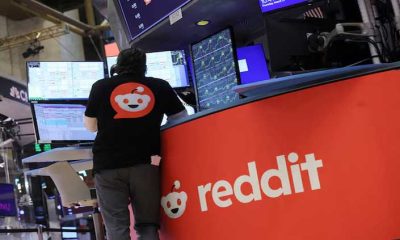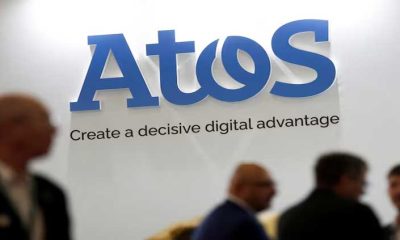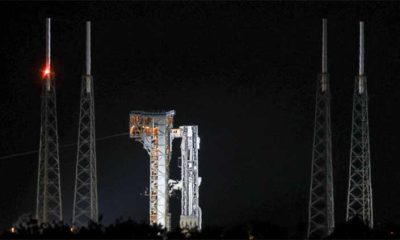I won’t forget the first time I took a ride in a car without anyone sitting in the driver’s seat.
It happened one night last September when a Chevy Bolt named Peaches picked me up outside a San Francisco bar. Our ensuing half-hour ride together produced, at first, a titillating display of technology’s promise. Then an unexpected twist made me worry that the encounter had turned into a mistake I would regret.
Peaches and I were getting along great for most of our time together as the car deftly navigated through hilly San Francisco streets similar to those that Steve McQueen careened through during a famous chase scene in the 1968 film “Bullitt.” Unlike McQueen, Peaches never exceeded 30 miles per hour (48 kilometers per hour) because of restrictions imposed by state regulators on a ride-hailing service operated by Cruise, a General Motors subsidiary, since it won approval to transport fare-paying passengers last June.
It was all going so smoothly that I was starting to buy into the vision of Cruise and Waymo, a self-driving car pioneer spun off from a Google project that is also trying launch a ride-hailing service in San Francisco.
The theory fueling the ambition is that driverless cars will be safer than vehicles operated by frequently distracted, occasionally intoxicated humans — and, in the case of robotaxis, be less expensive to ride in than automobiles that require a human behind the wheel.
The concept does sound good. And the technology to pull it off is advancing steadily, just like other artificial intelligence applications such as chatbots that can write college-level essays and produce impressive pieces of art within seconds.
But when something goes awry, as it did near the end of my encounter with Peaches, that sense of astonishment and delight can evaporate very quickly.
DESTINATION: UNCERTAIN
As we approached my designated drop-off location near the Fairmont Hotel — where presidents have stayed and Tony Bennett first sang “I Left My Heart In San Francisco” — Peaches advised me to gather my belongings and prepare to get out of the car.
While I grabbed my bag as the robotaxi appeared to be pulling over to the curb, Peaches suddenly sped up and — inexplicably — started driving away in the opposite direction.
After seeing the dashboard display screen indicating I was now somehow an estimated 20 minutes away from my destination, I grew frantic. I asked Peaches what was going on. There was no response, so I used a feature on Cruise’s ride-hailing center that enables a passenger to contact a human in a call center.
The Cruise representative confirmed that Peaches had gotten confused, apologized and assured me the robotaxi had been reprogrammed to get me to my original destination.
Indeed, the car did seem to be headed back to where I requested. Then it started doing the old same thing again, making me wonder whether Peaches might like me a little too much to let me go. Feeling more like I was stuck on Mr. Toad’s Wild Ride at Disneyland than riding in an artificially intelligent car, I contacted Cruise’s call center. Peaches, they told me apologetically, seemed to be malfunctioning.
Suddenly, Peaches came to a halt right in the middle of the street. I bolted from the Bolt, marooned several blocks away from my destination shortly before 10 pm.
Fortunately, I know my way around San Francisco, so I walked the rest of the way to where I needed to be. But what if this had happened to tourists? Would they know where to go? How would they feel being forced to walk around a strange neighborhood in a big city late at night?
MAYBE DON’T STOP HERE
When I discussed the incident during an interview for a recent story about robotaxis, Cruise CEO Kyle Vogt apologized and assured me the problem had been fixed.
Sure enough, I was picked up and dropped off at my designated destinations in rides I took with another Associated Press reporter in two different Cruise robotaxis — one named Cherry and the other Hollandaise — on a mid-February night in San Francisco. But Cherry chose to drop us off at a bus stop just as a bus was trying to pull up to pick up a bunch of passengers. They weren’t happy about their ride on mass transit being delayed; they began jeering us.
My experience apparently isn’t isolated. The San Francisco County Transportation Authority has raised a red flag about robotaxis making unexpected, prolonged stops in the middle of streets and identified other problems that threaten to cause headaches and potentially imperil public safety.
Earlier this month, Vogt revealed that Cruise had voluntarily recalled the software in 300 robotaxis after one of them rear-ended a bus in San Francisco and declared the problem that led to the fender-bender had been fixed. Not long after that, five Waymo vehicles blocked traffic after becoming disoriented in San Francisco’s famously foggy conditions and coming to a stop.
And my experience with Peaches? Whenever I reminisce about that ride, I am also reminded of another trip to New York that I took two days after the robotaxi couldn’t deliver me to my destination.
After I landed at JFK Airport, I hopped into an old-fashioned taxi driven by a fellow named Talid. I remember having a pleasant conversation with Talid, who chuckled as I recounted what happened with Peaches. At the end of the ride, Talid dropped me off at Grand Central Terminal, as I had requested. Then his cab drove off — with, of course, a human still behind the wheel.
Post Views: 78


 Sports3 months ago
Sports3 months ago
 Fashion2 months ago
Fashion2 months ago
 Sports3 months ago
Sports3 months ago
 pakistan3 months ago
pakistan3 months ago
 pakistan3 months ago
pakistan3 months ago
 World2 months ago
World2 months ago
 World2 months ago
World2 months ago
 Sports2 months ago
Sports2 months ago





















